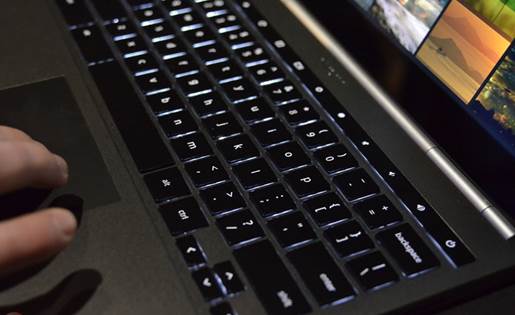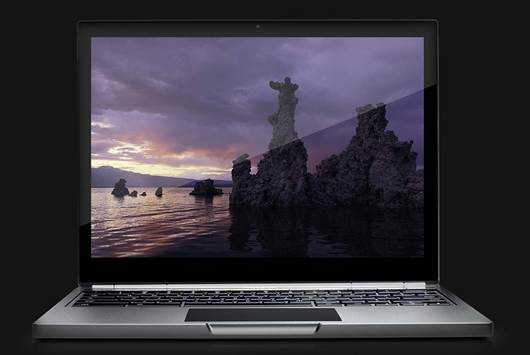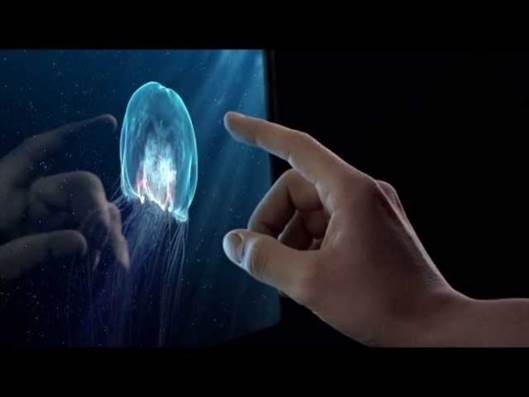The embossed keyboard continues to get hotter
and Google is mainly no exception with its latest Chromebook. The main keys are
embossed in a slightly concave area, and they have comfortable size and
distance between each other. Each key has a great feel and resistance. Typing
on this computer is very interesting.
However, function keys stay on the number pad,
and separate buttons to adjust the volume and brightness, etc. are another
story. They are evenly spaced and harder than other keys. This may not be a
nuisance, because you will not use them as often as the rest, but they stick
together, which makes it harder to find them by touch. Fortunately, all is
backlit, so identifying them in the dark should not a problem.
We also hope to have dedicated Home and End
keys, after seeing that other options of Chrome OS such as Ctrl + Alt + Up or
Down are a bit uncomfortable. However, you will quickly learn how to overcome
these rather small shortcomings and enjoy the great keyboard. Fortunately, the
trackpad is equally good as well.

Google
Chromebook Pixel’s backlit keyboard
It is made of glass with dark color and is
located in the center of the place where you put your wrist on, which makes it
slightly move to the right compared with the long bar. It features an anti-glare
coating, but still feels pretty smooth, which leads to a good feeling with
strokes. Of course, with a 12.85-inch touchscreen, you may not find yourself
using it as often as you think.
Screen
On the top is the IPS 12.85-inch LCD, 2,560x1,700
and with it, we cannot help thinking of the 13.3 inch screen, 2,560x1,600 which
is very similar to the 13-inch MacBook Pro with Retina display. It's small but
packed by 100 pixels more vertically, giving it a higher pixel density: 239ppi.
Naturally, that's not the full story here, and those who truly love the density
will know the resolution rate will be equivalent to the 3:2 ratio. In other
words, it's a bit high.

Screen
The 16:9 aspect ratio (or close to it) is the
mainstream between the non- Mac computers now, but even knowing that, this device
has a very high feel. However, we do not get bothered. As mentioned above, the
keyboard is quite large, and based on the fact that the Chrome OS is not very
friendly with multitasking with multiple windows, we rarely want a wider
screen.
In fact, it is our small and only worry about
this screen. On the other hand, we have nothing to work with the screen. Of
course, it has high resolution, sometimes we felt strange, making the pixels
disappear basically. In reality, the Chrome OS is simple and neat, which looks
great when presented with such clarity, but we cannot stop complaining about
the occasional excesses of white space that is becoming increasingly popular
among Google websites. With a high pixel-density screen like this, we had a
feeling it is used improperly.
Of course, that is until you play the 4K
footage that Google wisely stored on the computer, you will be stunned by its
wonder – even though it is shown in the resolution which is more than half of its
natural resolution.
This is the LCD screen, mounted behind a
Gorilla Glass, so glare can be a problem if your work environment consists of
bright lights in front. However, the reflection seems to be equal to the screen
fitted with the latest optical technology – that is, there is no reflection
effect seen on previous LCD screen. Contrast is quite good from any angle, even
though color accuracy decreases if you look at it from the angle which is too
high or too low, with everything quickly becoming pinkish. It’s quite nice.
And finally, this is indeed a screen with
touch support, which we did not know that we would need on the Chromebook and
actually we said that we are still not sure. We will discuss it in more detail
in the software section below.
Performance and battery life
Again, we need to talk about the Intel Core i5
1.8GHz processor here, which is a little trivial compared to that of most
high-end laptops. However, it proved to be so powerful to run Chrome OS. It is
combined with 4GB of DDR3 RAM and integrated graphics through the Intel HD 4000
chipset.
Not outstanding, but it runs the browser with
confidence. And really that's all what it can do with the limited choice of
applications available for the Chrome. Everything we tried was running fine,
although after long time of use, we found the heavier websites started to
become slightly lagging. However, that is not what restarting the browser can’t
resolve.
High-definition videos are smoothly played, although
when we were playing games, the device became quite warm. The fan vents lie under
the joints; a thin and open piece which fortunately does not emit a lot of heat
into your lap. It is easy to see, but it is not very big or annoying, and as
maybe you cannot do heavy work here, do not expect to hear it often.

High-definition
videos are smoothly played, although when we were playing games, the device
became quite warm.
When it comes to battery life, Google
estimates the 59Wh battery will provide "up to" 5 hours of continuous
use. Indeed it can. In the standard battery test, with repeating one video at fixed
brightness, it lasted 4 hours 8 minutes for the Wi-Fi model. The LTE model, with
LTE antenna on, lost to the former 30 minutes, which was about 3 hours 34
minutes.
Unfortunately, these figures are quite poor. The
13-inch MacBook Pro with Retina lasted more than 6 hours in the same battery test,
while the 13-inch MacBook Air and the latest Samsung Chromebook outlived about
30 minutes.
Connectivity
As mentioned above, the two models of the Chromebook
Pixel include dual-band 802.11a/b/g/n MIMO, which means that you will have more
or less the optimal speed regardless of the type of router you are connecting.
Of course, upgrading to the LTE version of $1,449
means you can avoid these routers. This includes the Qualcomm MDM9600 chipset to
get the LTE band 13, intended only for Verizon in the United States. Therefore,
we tested it in two different LTE markets on both sides of the ocean. Speed
varies from place to place, but it is generally equal or exceeds the rate at
which we can see from other mobile devices compatible with Verizon.
Regarding the possibility of more practical
connections, it is worth noting that the modem takes about 30 seconds to
reconnect after the laptop resumes from suspended mode, a bit annoying but of
course it is not slower than your average LTE USB modem. Verizon also includes
100MB of free data per month for the first two years of owning your Chromebook,
but then you will have to pay for a data package from Verizon.
Oh, and the Pixel lacks an Ethernet port, and
does not include the adapter either. We tried a few standard USB Ethernet
adapters and all worked without a problem.